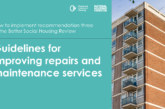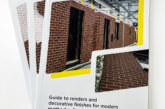
Development, refurbishment and maintenance needs to be managed with tenants in mind, says Winckworth Sherwood’s Charlotte Cook.
Housing associations and local authority property management teams will have cyclical programmes of planned maintenance and refurbishment to keep housing stock in the very best of condition. Sometimes, that work can be carried out with tenants remaining in situ; other times work will require tenants to be moved into alternative accommodation.
Maintenance and refurbishment programmes might include the replacement of a kitchen every 15 to 20 years, a new roof every 30 to 40 years, and the more regular upkeep of windows, doors and exterior paintwork. There will be times, however, where more serious work needs to be undertaken — perhaps a significant remodelling of an estate or a building, or following serious damage.
Tenancy agreements at the very simplest allow for residents to remain in occupation and for quiet enjoyment of that property. Asking them to move, albeit temporarily, can be a difficult process.
Creating a dialogue
The first step is good communication. Take time to talk and explain to residents the programme of work planned, how long it will take, and what it will mean for them — a new kitchen or a more efficient home with lower running costs is unlikely to trouble many residents.
This is now more than just good behaviour, but potentially a policy requirement. Sadiq Khan, the Mayor of London, has publically said that any housing association receiving money from his office will be expected to undertake a full ballot and consultation with residents before undertaking any regeneration programme, which would undoubtedly add further cost and delay.
If residents are required to decamp from their home to a suitable alternative, it is important to document this: including anticipated time of move, the reasons why, and confirming both parties’ intentions as to the return. Residents will want to be sure that they retain their tenancy agreement on their home whilst ensuring any benefits remain unaffected, and housing associations will want to ensure that any move is temporary. Residents should be granted a licence of the temporary accommodation.
Failing or incorrectly documenting this can lead to significant issues, including securing vacant possession of the temporary home, and a potential knock on impact on the timing of works on the remainder of the estate.
Resident feedback
Where redevelopment of a building or estate is underway with tenants remaining in their homes, planning permissions will typically take into account residents’ considerations. This might include restrictions on working hours, restrictions on traffic movements and measures to minimise dirt and dust. Housing associations should, of course, always endeavour to be a good neighbour and communicate clearly with residents what is happening and the impact it might have.
Certain works will fall outside of the cyclical maintenance planning, and the requirement to relocate may not be as welcome as above. The tragic Grenfell fire has seen residents in a number of neighbouring buildings and those where cladding has been deemed unsafe given no choice but to move. Such enforced moves can be difficult, and cause problems for both residents and housing associations alike.
Housing associations and local authority landlords have the dual responsibility of maintaining good quality homes for residents (present and future) whilst respecting their right to occupation. It is a well travelled path, but one with many opportunities for mistakes to be made.








